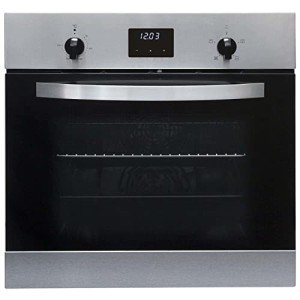10 Healthy Habits For Ovens And Hobs
Understanding Ovens and Hobs: A Comprehensive Guide
Cooking has actually come a long method because the days of open flames and basic cooking methods. Today, ovens and hobs are at the heart of modern kitchens, supplying flexibility, effectiveness, and an array of cooking alternatives. Whether you are a beginner cook or a skilled chef, understanding the differences, features, and functions of these home appliances is vital for maximizing cooking potential. This short article breaks down the different types of ovens and hobs readily available on the marketplace, their performances, and how to choose the right devices for your kitchen.
What is an Oven?
An oven is an enclosed area designed for heating and cooking food, offering various methods such as baking, roasting, and broiling. Ovens are available in numerous types, each serving unique cooking preferences and requirements.
Types of Ovens
Traditional Ovens:
- Use gas or electrical power for heating.
- Usually consist of a heating element at the top and bottom.
- Suitable for basic baking jobs.
Convection Ovens:
- Use a fan to flow hot air, promoting even cooking.
- Ideal for baking, roasting, and reheating.
- Lowers cooking time and boosts taste.
Steam Ovens:
- Utilize steam to cook food while keeping moisture and nutrients.
- Outstanding for health-conscious cooking, such as veggies and fish.
Microwave Ovens:
- Use electro-magnetic radiation to heat food rapidly.
- Best for reheating leftovers or cooking easy meals.
Wall Ovens:
- Built into the wall, saving area in the kitchen.
- Available in various setups, including single or double ovens.
Secret Features of Ovens
- Temperature Control: Precision heating for different baking and preparing procedures.
- Self-Cleaning Options: Some designs have self-cleaning modes that use high temperatures to burn food residue.
- Smart Features: Wi-Fi connectivity allows remote pre-heating, monitoring, and recipe management via smartphones.
What is a Hob?
A hob is a cooking surface area, often described as a stove or cooktop, where cookware is put for heating. Hobs are offered in various products, sizes, and heating methods, accommodating varied cooking needs.
Kinds of Hobs
Gas Hobs:
- Utilize gas burners for direct flame cooking.
- Deal accurate temperature level control and are preferred by numerous professional chefs.
Electric Hobs:
- Use electric coils or smooth tops.
- Some designs are equipped with induction innovation, supplying fast heating through electromagnetic energy.
Induction Hobs:
- Cookware must be made from magnetic products.
- Really energy-efficient, supplying quick heat and reducing burn threats.
Ceramic Hobs:
- Feature a glass-ceramic surface area with heating elements underneath.
- Easy to clean but can be less energy-efficient than induction hobs.
Secret Features of Hobs
- Burner Configuration: Varies from 2 to 6 burners, depending upon model and size.
- Power Levels: Multiple settings permit greater accuracy in cooking.
- Security Features: Options like flame failure devices and child lock settings make sure security throughout cooking.
Picking the Right Oven and Hob
Picking the right oven and hob for your kitchen involves cautious factor to consider of various aspects. Below is a list of questions to assist your choice process:
- What is your primary cooking design?
- How much kitchen area do you have?
- What is your budget plan?
- Do you choose gas or electric home appliances?
- Are extra features like wise connection essential to you?
Table Summary of Key Differences Between Ovens and Hobs
Function
Oven
Hob
Functions
Baking, roasting, broiling
Boiling, frying, sautéing
Cooking Method
Confined heat
Direct cooking surface area
Temperature level Control
Adjustable settings
Range settings
Types
Electric, gas, convection, microwave
Gas, electric, induction, ceramic
Cooking Capacity
Larger (can cook numerous dishes)
Smaller (concentrate on immediate cooking)
Cleaning
Self-cleaning options available
Usually manual cleaning required
Maintenance Tips for Ovens and Hobs
Correct care and maintenance of your cooking appliances extend their lifespan and effectiveness. Here are important maintenance tips:
Regular Cleaning:
- Clean the oven interior after each usage to prevent residue accumulation.
- Wipe down hob surface areas after cooking to prevent spots.
Check Seals:
- Ensure the oven door seals are intact to preserve energy performance.
- Change worn-out gaskets and seals as needed.
Examine Burners and Elements:
- For gas hobs, check for clogs in burners.
- For electric hobs, examine coils and surfaces for indications of wear.
Frequently asked questions
Can I use any pots and pans on induction hobs?
- No, induction hobs only deal with magnetic pots and pans, such as cast iron or stainless steel.
What is the most energy-efficient cooking device?
- Induction hobs are normally the most energy-efficient choice, utilizing less energy than conventional gas or electric models.
How frequently should I clean my oven?
- It's a good idea to clean your oven every few months, or more regularly if you use it often.
Can I set up an oven and hob individually?
- Yes, both devices can be set up independently based upon kitchen style and area.
What should I consider when installing a gas hob?
- Guarantee appropriate ventilation and follow regional safety codes. Cookers And Hobs is a good idea to have an expert install gas devices.
Comprehending the features, types, and upkeep of ovens and hobs can substantially boost your cooking experiences. Selecting simply click the up coming website tailored to your cooking design, kitchen space, and security requirements can make all the distinction in achieving culinary success. By being informed about your alternatives, you can delight in a more efficient and pleasurable cooking journey, bringing scrumptious meals to your table with ease.
